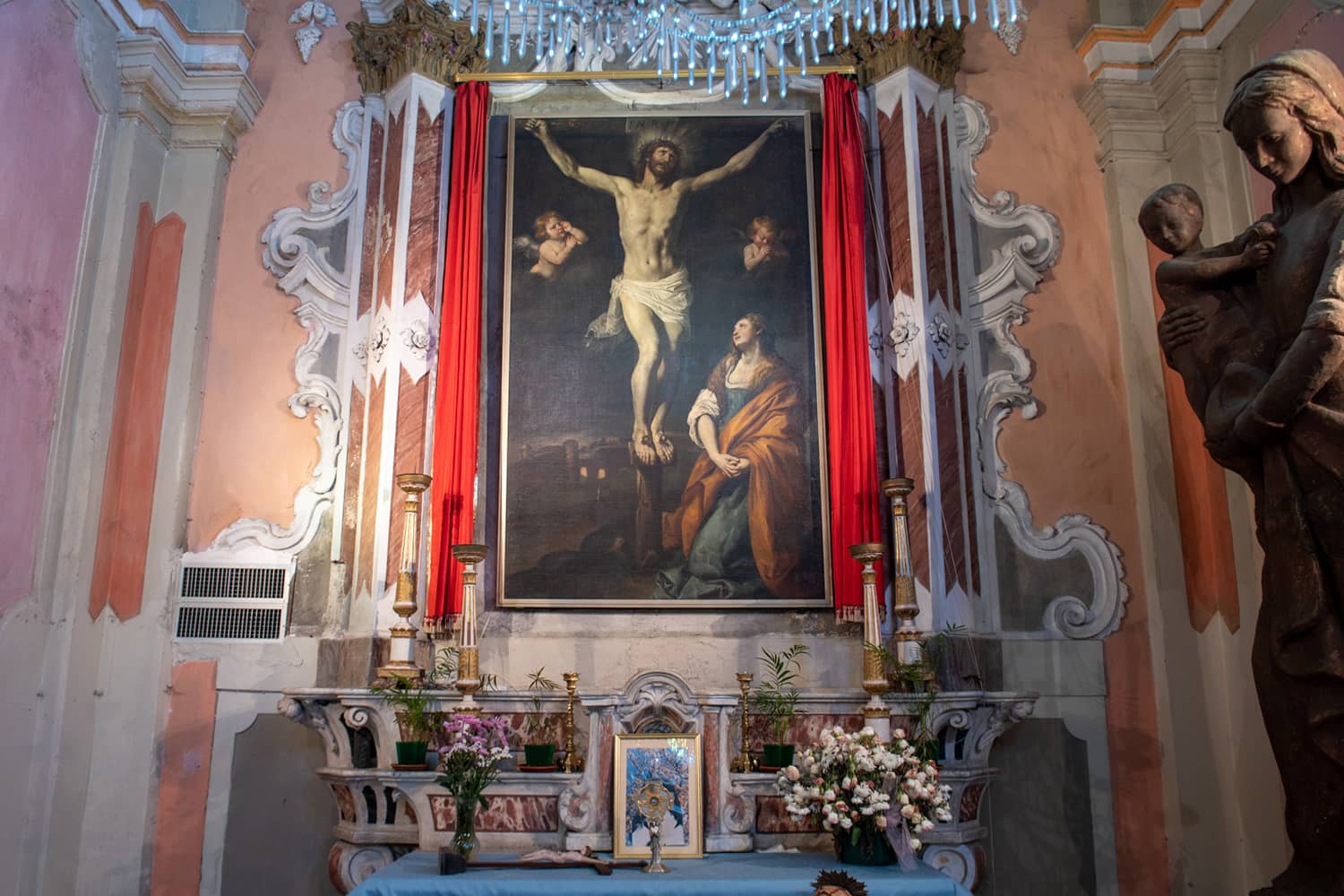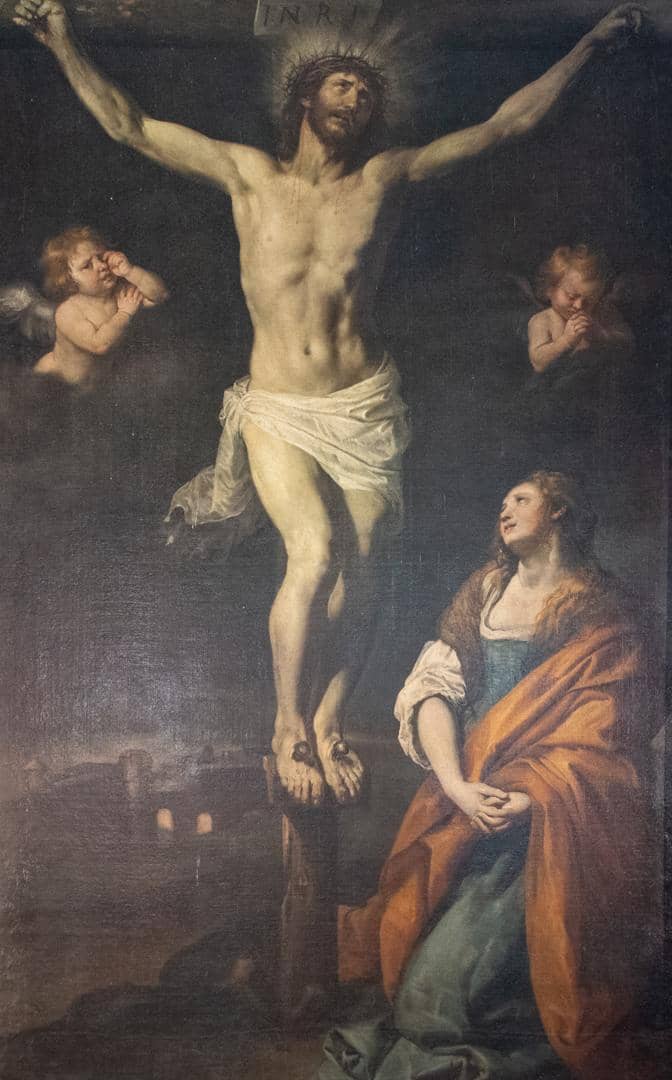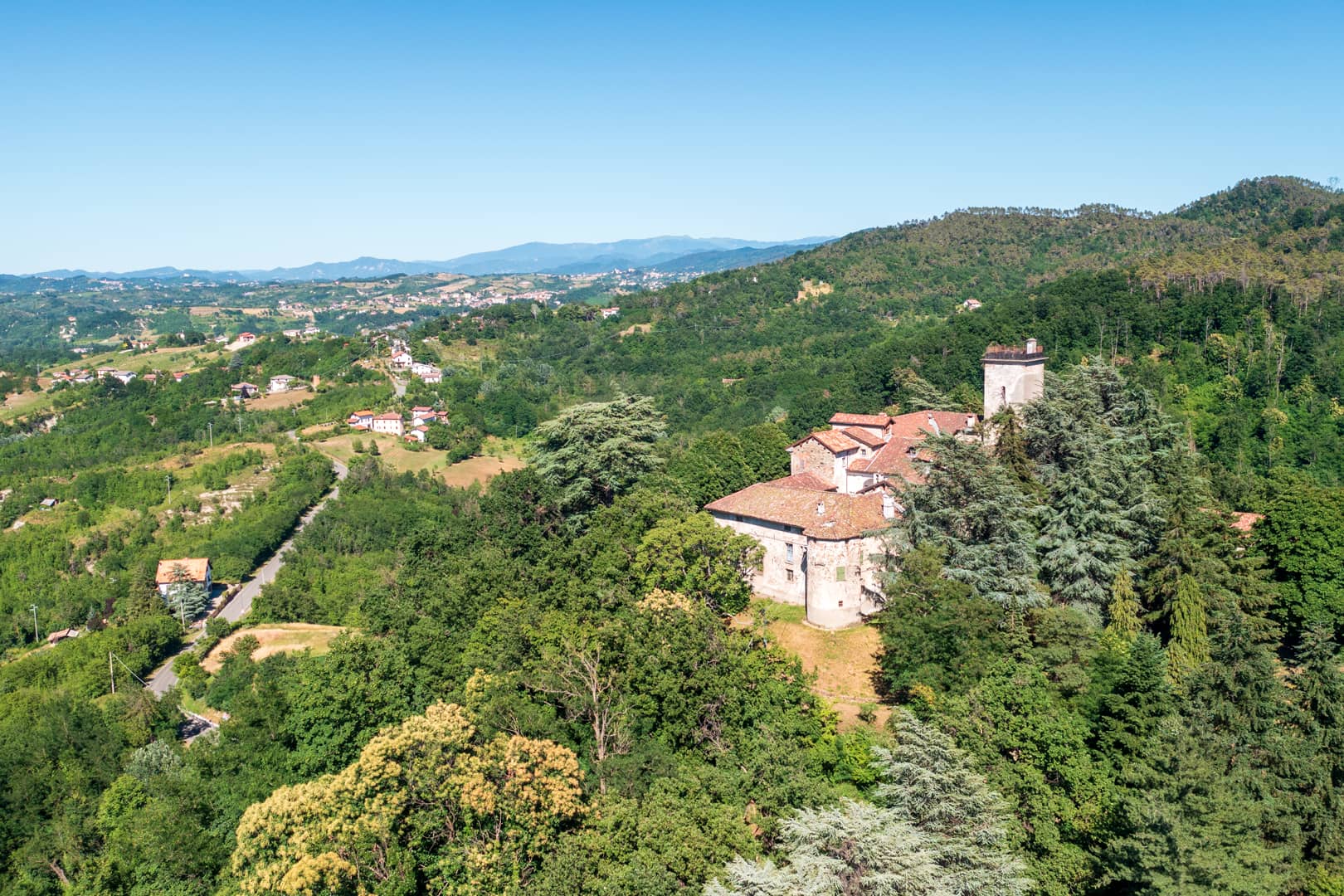“According to a scholarly tradition, which, however, finds confirmation in toponymy and in the discovery of significant archaeological materials, the birth of the first inhabited settlement of the place was due to St. Columbanus, the Irish monk born in 540 and died in 615 in the Abbey of Bobbio that he himself founded, who found in our place that isolation and tranquility that allowed industrious meditation, which was well suited to a monastery of the order of St. Benedict.” (from A. Laguzzi, Guide to Belforte Monf.to, 2005, p. 4.)
Belforte’s first name was Uxetium, a settlement that Charlemagne aggregated to the Contado of Acqui. However, the first documentary mention, of the village and castle, dates back to 1217.
Belforte passed, in the 15th century, under the Marquises of Monferrato, but the Genoese Spinola family retained it as feudal lords.
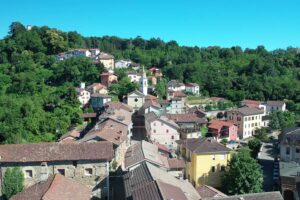
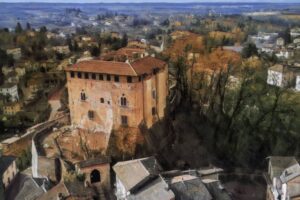
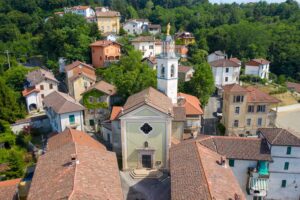
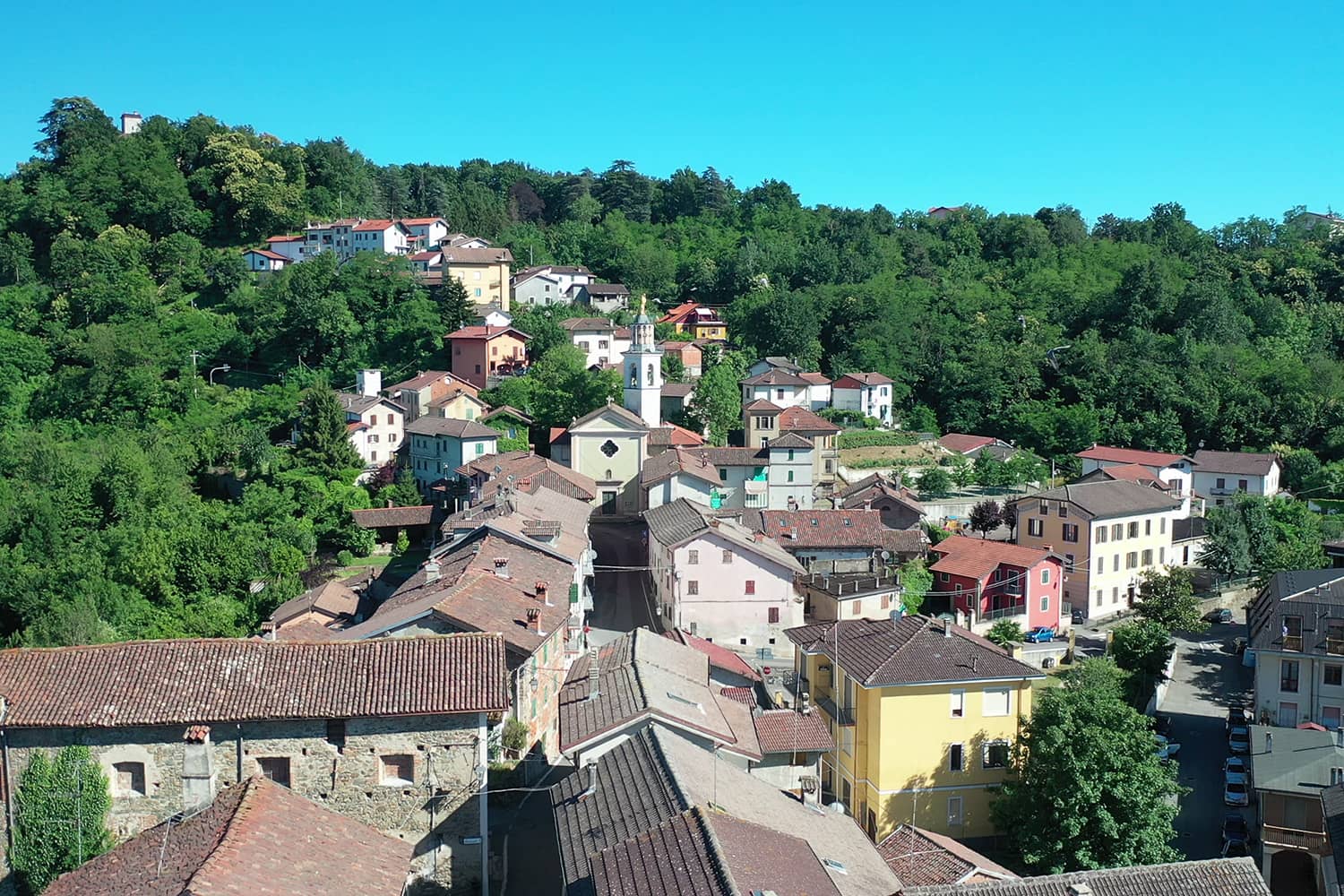
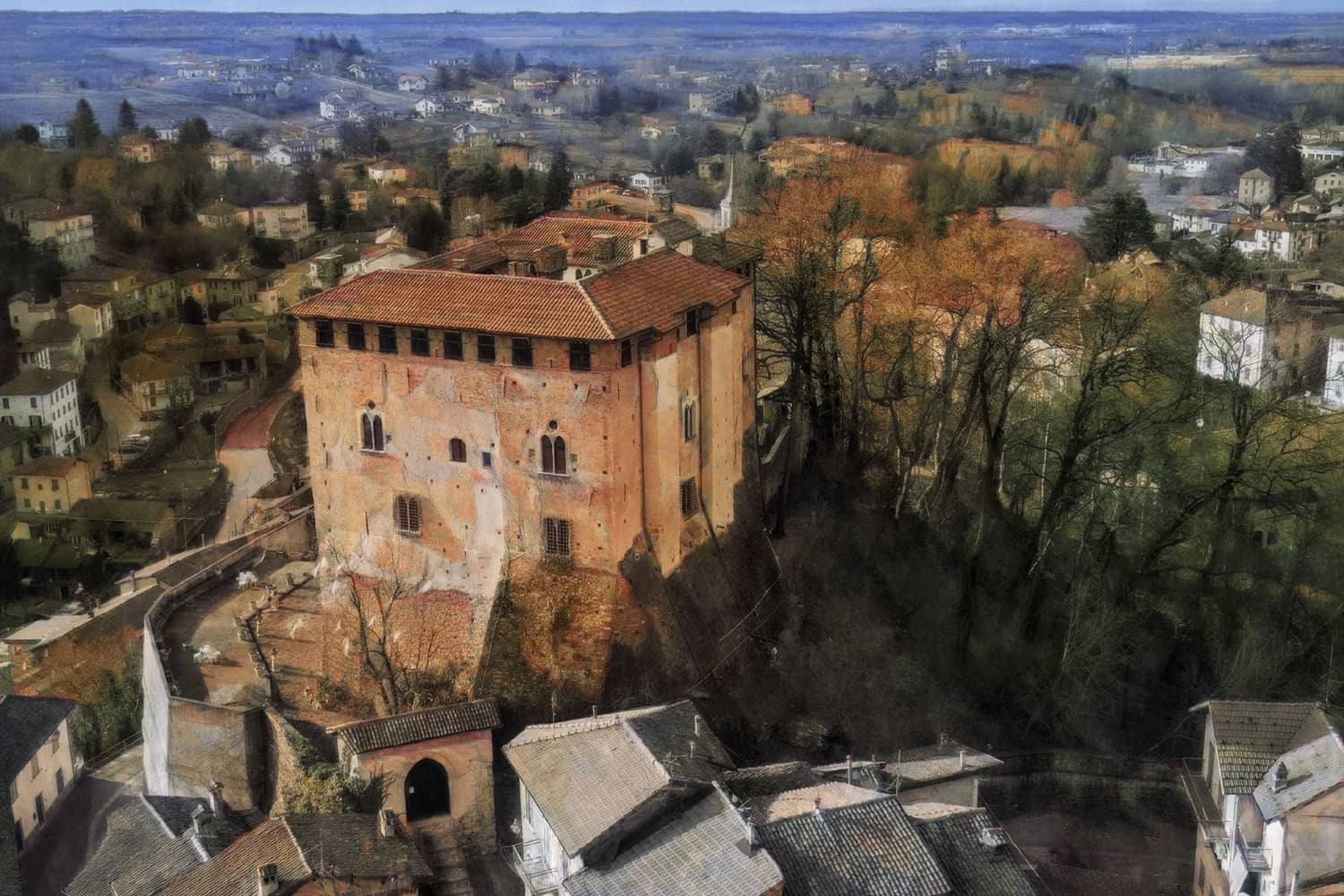
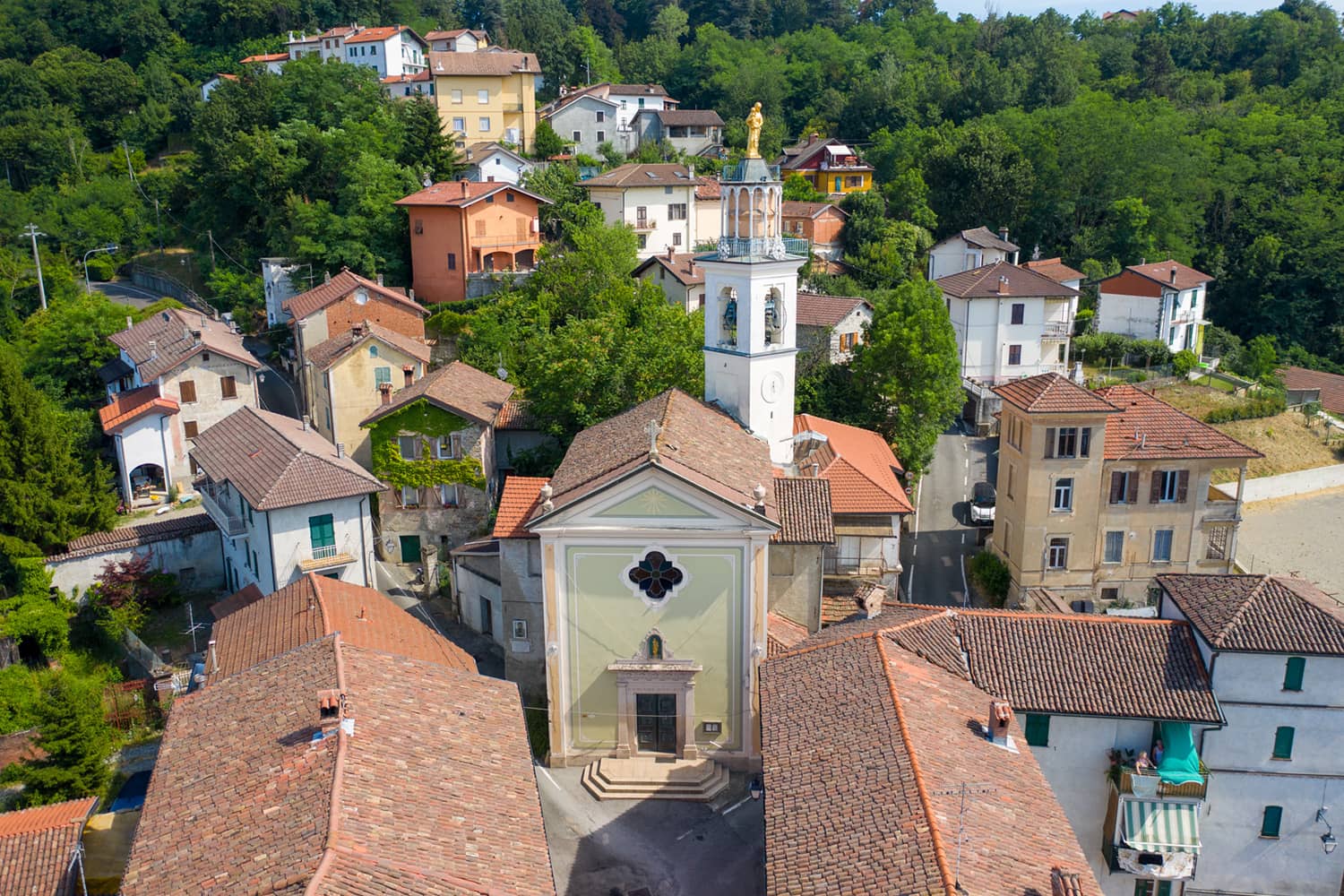
What to see in Belforte Monferrato
Starting in 1224, the existence of a castle is documented, presumably in the Bertarelli locality, and thus on a different site from the present one. This first castle was later destroyed by the same owners, the Marquises del Bosco, perhaps because of quarrels between different members of the family.
Above it, far from the village, was the monastery of St. Benedict with its church, still well preserved, dating from the 12th-13th centuries.
At an unspecified time, but perhaps in the 13th century, a tower was built on the highest point of the rise, and later this was incorporated by the new castle, which had to absorb the monastery as well.
In the eighteenth century, the castle began to be converted into a residence, and this involved several additions. In the second half of the 19th century, Marquis Carlo Cattaneo had the vast park that still surrounds the castle built.
To the right of the castle’s entrance, towards the end of the 18th century, a chapel was built, dedicated to St. Catherine of Genoa, a saint who, because she belonged to the Fieschi-Adorno family, was particularly linked to the aristocratic world of Oltregiogo.
“The 16th-17th centuries saw in all our areas a notable change in the conception of religious topography: new parish churches were built in the inhabited centers, to better serve the urban population, and the old ones were preserved, where possible, for use as cemeteries, while new chapels sprang up in the suburbs and in the countryside, for the benefit of the faithful further afield, and in the villages the oratories of the confraternities also became numerous. Belforte was not a wealthy center, but it was vital, and it participated in these changes so on January 18, 1598, it began to administer the sacraments in the nova church of Santa Maria, dedicated to the Nativity of the Virgin, whose factory was inserted into the built-up area.” (from A. Laguzzi, Guide to Belforte Monf.to, 2005, p. 17.)
With a single nave, it boasts three altars. The high altar
It originally had a single nave: today it looms from afar with the bell tower topped by a gilded bronze statue of the Virgin and Child, the work of Don Wandro Pollarolo.
The interior has maintained the original layout: it has a single nave and boasts three altars.
“The high altar in polychrome marble dates back to the first half of the 19th century, is surmounted by a circular peripteral temple and characterized at the bottom sides by two marble rampant eagles, whose talons rest on sheaves of wheat and bunches of grapes, perhaps a citation of the eagle present in the Cattaneo della Volta coat of arms that protects the prosperity of the village.” (from A. Laguzzi, Guide to Belforte Monf.to, 2005, p. 19.)
To the side of the altar, there is an ancient tabernacle made of slate stone.
The left altar is dedicated to Our Lady of the Rosary and houses a Baroque statue of the Virgin, which, according to tradition, arrived from Milan after a journey that lasted about twenty days, on an ox-drawn cart. Surrounding it is a gilded frame with inserted depictions of the Mysteries of the Rosary.
The right altar was originally titled to Saint Defendente, but as early as the seventeenth century the titling was changed, and since then the large canvas of the Crucifixion, donated by the Grimaldi family, which chose the altar as the burial place of some family members, has stood there. Subsequently, the Ranieri of Monaco, descendants of the Grimaldi family, mandated that its access be walled up.
The oratory was built around 1670 to give a home near the town to the confraternity of the same name, previously housed in the church of St. Benedict.
In the early twentieth century, in order to raise funds, the Brotherhood organized a Theater Company, the proceeds of which were used to finance the activities of the brothers in need.
The Oratory building has a single nave and a single altar containing a beautiful altarpiece “L’Annunciata di Montecucco” (19th century).
There are also statues of St. Roch and St. Sebastian, patrons of the Brotherhood.
On the walls are processional crucifixes of particular beauty, value and grandeur.
The oldest church in Belforte is the one linked to the monastery founded by St. Columbanus, set in a lonely position among the woods, called San Benedetto. Erected as a parish church only in the years between the 15th and 16th centuries, it was probably erected in the 12th. With a single nave, it still has the ancient terracotta floor. In the apse are two fragments of frescoes, presumably from the Modern Age, depicting St. Vincent and St. Barnabas.





